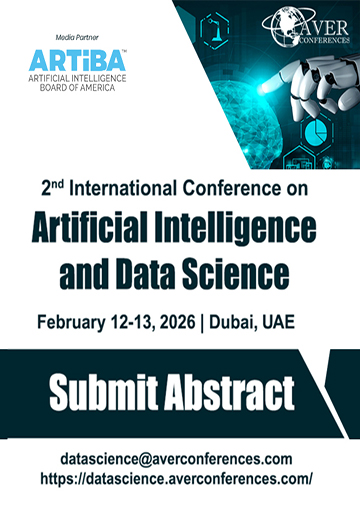Artificial Intelligence Innovation: The Future With OpenAI GPT-3

What is GPT-3?
GPT-3 is the 3rd release of the OpenAI collection of Generative Pre-Trained models. GPT-1 and GPT-2 laid the foundations for GPT-3, proving the success of two key hypotheses: Transformers + unsupervised pre-training works fine (GPT-1), and language models can multitask (GPT-2).
GPT-3 is a language model built on the transformer architecture and pre-trained in an unsupervised, generative manner which has a decent performance in one-shot, zero-shot & few-shot multitask settings. It functions by anticipating the next token in the sequence of tokens, and it can do this for NLP tasks that it's not been taught. After some instances, it reached the highest performance in specific benchmarks, like machine translating, Q&A, and Cloze tasks.
GPT-3 was trained on massive Internet text databases, a total of 570GB. It was the most extensive neural network at its release, with 175 billion variables (100x GPT-2). It's still the most extensive neural network with the highest density and exceeded by miniature dense models such as Switch Transformer and Wu Dao 2.0.
The most striking characteristic of GPT-3 is that it's a meta-learner and learned to acquire. You can ask it using natural language to carry out the task in a different way while it "understands" the task it is required to perform in a similar way (keeping its distance) that humans would.
The working process of GPT-3
GPT-3 is a model for language prediction. This means the neural network machine-learning model can take input from the text and then transform it to what it believes to be the most effective result. This is achieved by training the system on a massive amount of online text to identify patterns. Mainly, GPT-3 is the third version of a system focused on generating text by being trained on an enormous volume of data.
When a user enters an input in text, the program evaluates the language and employs a predictor of text to produce the most probable output. Even with no further adjustments or education, the system produces text with high-quality that is similar to the text human beings would write.
Training the GPT-3
The term GPT-3 acts as an acronym for the term "generative pre-training" that is, in fact, the third iteration to date. It's generative because, unlike other neural systems that spew out a numerical score or an answer either yes or no, GPT-3 can generate lengthy sequences of textual content as output. It's pre-trained because it was not designed with any domain knowledge; however, it can accomplish tasks specific to domains like a translation of foreign languages.
As in the context of GPT-3, the language model calculates the probability that a word will appear in a text based on other words in the text. This is referred to by the term "conditional probability" of the words.
For instance, in this sentence: I wanted to make an omelet. I went to the refrigerator and pulled out some ___ The blank could be filled in with any word, including gibberish, due to the endless possibility of the language. However, "eggs" likely scores relatively high to fill in the space in the majority of texts, much higher than, say, "elephants."
When the neural network in GPT-3 is being developed, it's known as the training phase; GPT -3 receives millions and millions of texts. It transforms the words into what are known as vectors, which are numerical representations. It is a method of compressing the data. The program then attempts to decompress the compressed text and transform it into a proper sentence. The process of compressing and decompressing improves the program's ability to calculate the probability of words conditionally.
After the model has been trained, its calculations on conditional probabilities over billions of terms are as precise as possible. Then it can predict the following words when it is stimulated by someone typing a word or two. The process of prediction is referred to within machine learning as inference.
It creates a striking mirror result. Not only do probable words emerge, but also the symphony and the rhythms of genre or forms of written tasks such assets of questions-answer are produced.
The process of training the GPT-3 artificial intelligence algorithm consists of two phases.
Step 1: Create the vocabulary, the production rules, as well as the different categories. This is accomplished by providing inputs through books. For every phrase, the system will predict the category in which the word fits best, and then a production rule must be constructed based on that.
Step 2: The process of developing the vocabulary and production guidelines for each category occurs. This is accomplished by providing the models with inputs in the form of sentences. For each sentence, the model can predict the category to which each word belongs. After that, production rules must be constructed.
The model consists of several tricks that give it to increase its ability to create text. For instance, it can identify the origin of a word based on the context behind it. It can also predict the word that will follow based on the final word in an entire sentence. It also predicts the length of the sentence.
The Specialty of GPT-3
GPT-3 can create anything that has a language structure - that means that it can respond to questions and compose essays, write down long documents and translate them into other languages, write notes, and even generate computer code.
In actuality, in one demo available online, it demonstrated making an app that appears and operates similarly to the Instagram application just by using a plugin for the program Figma, which is extensively used to design apps.
It is pretty revolutionary, and If it proves effective and practical in the long run, this could have a massive impact on the way applications and software are developed shortly.
The code itself isn't made available to the general public at this time; access is granted to developers who are enrolled in an API maintained by OpenAI. After the API was made public in June of this year, examples of prose, poetry, news stories, and even creative fiction were made using the API.
This article is fascinating - in which you can observe GPT-3 creating a compelling attempt to convince us, humans, that it isn't going to do any harm. Even though its robotic honesty implies that it has to acknowledge the fact that "I know that I will not be able to avoid destroying humankind," should evil individuals decide to take the initiative!
The power of GPT-3
More than 300 applications provide GPT-3-powered conversation, search, text completion, and additional advanced AI features using API.
The OpenAI API has more than 300 apps using GPT-3. Hundreds of thousands of developers worldwide are working using the platform, producing approximately 4.5 billion words per day and growing production traffic.
If you are given a text prompt, such as a word or phrase, GPT-3 can return an answer to a text that is natural language. Developers can "program" GPT-3 by showing it a handful of instances of "prompts." The API is designed to be easy for anyone to use. However, it is also versatile enough to allow machine learning teams to be more efficient.
The stream of algorithmic content in GPT-3
Each month, more than 409 million people visit around 20 billion pages, and they publish about 70 million articles on WordPress, which is the leading CMS online.
The primary feature unique to OpenAI GPT-3 is responding to a small amount of input intelligently. It has been extensively trained using billions of parameters and can produce more than 50,000 characters in a matter of minutes without any oversight. This singular AI neural network creates text with incredible quality, making it difficult for humans to discern whether the output was composed by GPT-3 or by a human.
To Summarize
There's a lot of buzz about the GPT-3 AI algorithm at the moment. It is possible to claim that soon it will offer more than just text. It will include videos, images, and many others. Numerous researchers have predicted that GPT-3 will convert words into pictures and vice versa.






